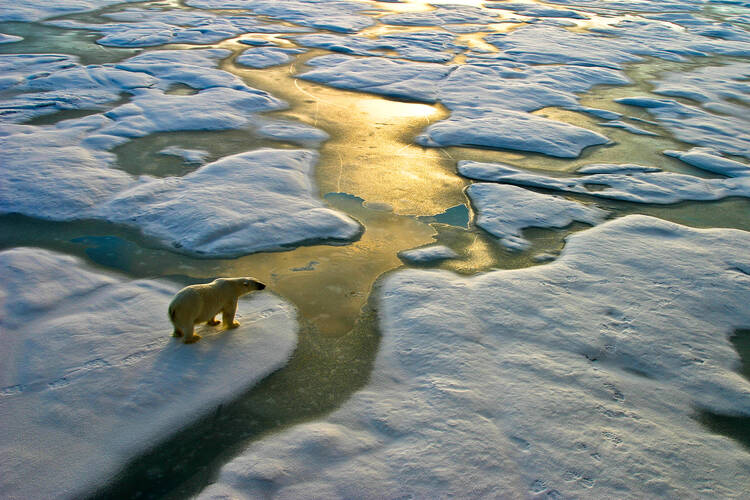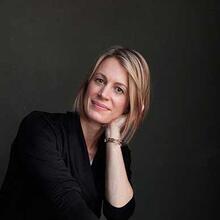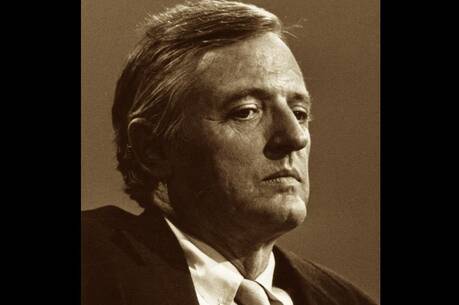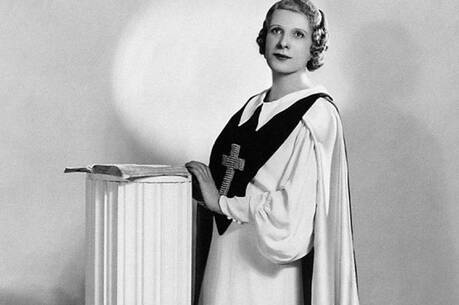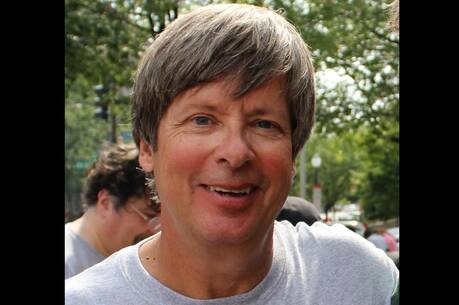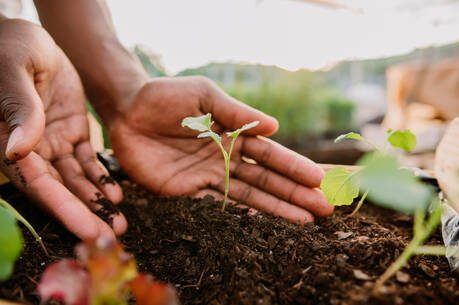Review: The Pentecost of climate change
If you are a Christian who thinks about climate change, you have probably heard of Dr. Katharine Hayhoe. And if you haven’t, it’s time you did. Like the theologian Stanley Hauerwas, Hayhoe has been named one of Time magazine’s “100 most influential people.” She is a climate scientist whose work is devoted to projections of climate change patterns and their impact on communities. She is also a National Climate Assessment author, the lead scientist at the Nature Conservancy, a mother, a professor at Texas Tech and the wife of a Christian pastor.
With seemingly more hours in the day than the rest of us, she is the Beyoncé of climate science communication, with some beats to throw down. Her new book, Saving Us, is an extended, carefully organized meditation on how the most important thing anyone can do about climate change—as a start—is to talk about it. This book shows readers not only why, but how.
Saving Us is a conversational, first-person narrative that melds the social science around climate change attitudes and communication into a framework and set of stories that readers can access and relate to. It might seem to be a strange move for a professional climate scientist to focus less on the science and more on the question of how humans connect. But for Hayhoe, while the science is compelling, what matters most are shared topics of concern for the places we live and the people we care about.
Saving Us is an extended, carefully organized meditation on how the most important thing anyone can do about climate change—as a start—is to talk about it.
It doesn’t matter if the term climate change or the science behind it are matters of consensus; facts, Hayhoe reminds us, do not themselves persuade. Experiences, care, connection and values are the way to the heart of climate communication. In fact, Hayhoe’s book is one among several recent publications that show how much heart and integrity matter in pursuit of practical science communication, a theme also prominent in Faith Kearns’s excellent book, Getting to the Heart of Science Communication.
Indeed, Saving Us is far from a deluge of facts. Epigraphs in each chapter generally feature a public expert of some sort—Stephen Covey and George Washington, for example, as well as climate scientists and policy wonks—and a conversation partner she has encountered, whether at a women’s group at a church, at a conference or on Twitter. Hayhoe also presents businesspeople, activists, church members, educators and scientists who take creative approaches to solving place-based problems in climate-informed ways. And she amiably brings readers along as she recounts meeting with Rotarians in Texas who came to understand climate change impacts as central to the Rotary mission.
We hear about why, on a trip to the Arctic, Hayhoe reversed her skepticism about polar bears as a bellwether of climate change: “What’s happening to the bears is happening to people, too. Yet all too often, we seem to be even less conscious of it than the bears.”
Perhaps the biggest takeaway from these stories is that “sharing local climate impacts” has “amazing depolarizing power.” Hayhoe demonstrates how sharing observations from our collective spaces and individual or family experiences can lead to overlapping insights about the directions and implications of changes in water availability, land use, pollution and more. And these insights often allow people to talk about deeper questions of what matters to them and why.
Drawing on a framework from the social scientists Tony Leiserowitz and Ed Maibach, Hayhoe begins her book by acknowledging that a certain percentage of people in U.S. society are unwilling to engage in constructive conversations about climate changes. These “dismissives” are people who “can’t leave the topic of climate change alone” but talk about it only in an antagonistic way. For them, Hayhoe recognizes, “there is no secret to a constructive conversation.... I don’t think it’s possible to have one, short of an honest-to-God miracle.”
Part of what makes Hayhoe so effective is that she is not only brilliant; she is also empathetic.
But as Hayhoe also rightly points out, the 7 percent of the U.S. population who are dismissives shouldn’t set the tone for others who are “doubtful” about climate change (11 percent), “disengaged” (7 percent), “cautious” (approximately 20 percent), “concerned” (28 percent), and “alarmed” (26 percent). People’s perceptions of and relationships to the realities of climate change are much more diverse than many people assume.
Thus Hayhoe’s primary thesis:
By bonding over the values we truly share, and by connecting them to climate, we can inspire one another to act together to fix this problem. But it all begins with understanding who we already are, and what we already care about—because chances are, whatever that is, it’s already being affected by climate change, whether we know it or not.
For Hayhoe, the “secret formula” to climate change communication is not to harangue or lecture, but to “bond, connect, and inspire.” The point is not to convert people to a particular point of view, but to invite conversation about what matters to all of us and how climate change might be manifesting itself in relation to things we care about—whether that is hunting, aquifer depletion, agricultural water supply, mortgages in Miami or the changing patterns of bird migration.
“In fact,” writes Hayhoe, “chances are you’ll know more afterward than you did before; you’ll have a better understanding of the person or people you’re talking to than you did earlier; and you’ll be encouraged rather than discouraged by your conversation.” Part of what makes Hayhoe so effective is that she is not only brilliant; she is also empathetic. She also understands the import of both theological and scientific questions and is unafraid of showing where she has misunderstood things in the past.
From a theological and scientific perspective, the maxim that “truth cannot contradict truth” runs tacitly throughout this book, as well as through Hayhoe’s own life. “After all,” Hayhoe tells us, “the reason I’m a climate scientist is because I’m a Christian.” Hayhoe’s skilled and straightforward presentations of faith align with what the Catholic Church, the Evangelical Environmental Network and many other faith groups now teach. “The biblical mandate for stewardship and care for creation, the connection between climate change and poverty, and the Bible verses” all direct her concerns. For Hayhoe, Christian faith frames and motivates the practice of rigorous science.
What is perhaps most remarkable about Saving Us is that regardless of one’s views on Christianity or climate change, this bookwill be well worth any reader’s time. It is, one might say, the Pentecost of Christian climate change communication, demonstrating the power of connection despite perceived barriers.
This article also appeared in print, under the headline “The Pentecost of Christian Climate Change,” in the Spring Literary Review 2022, issue.


